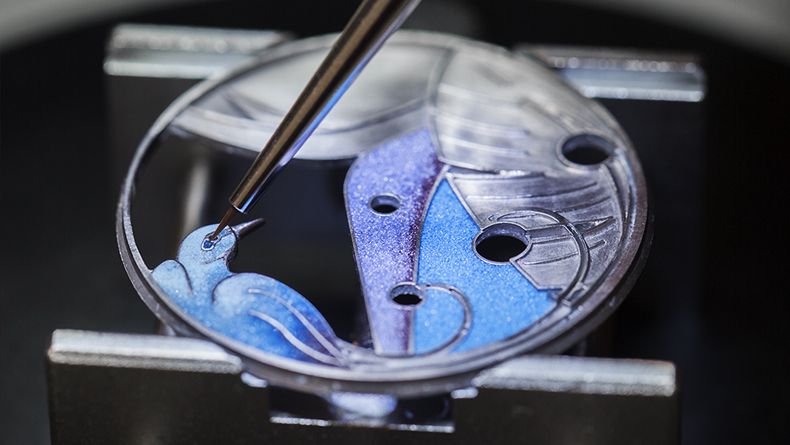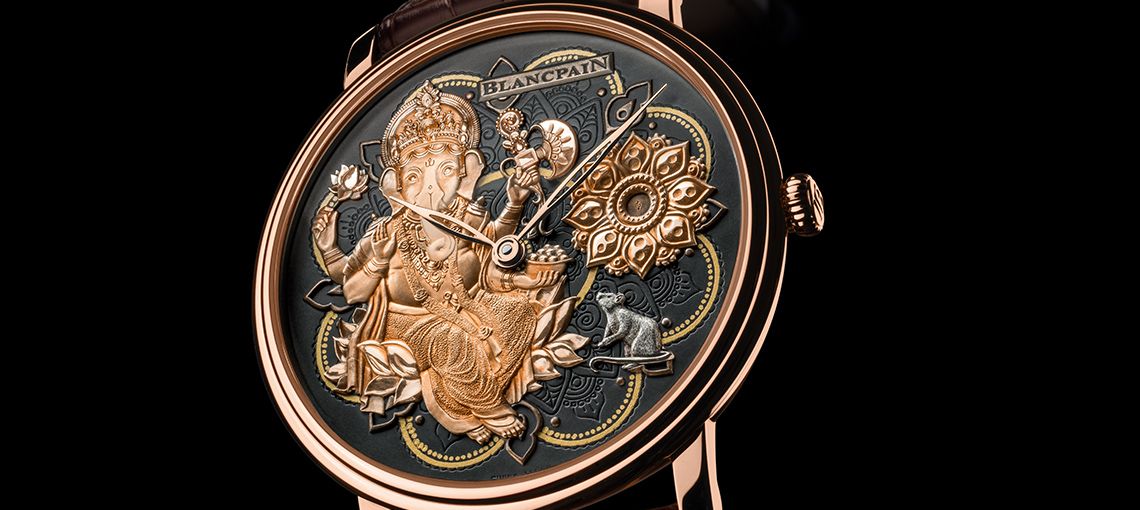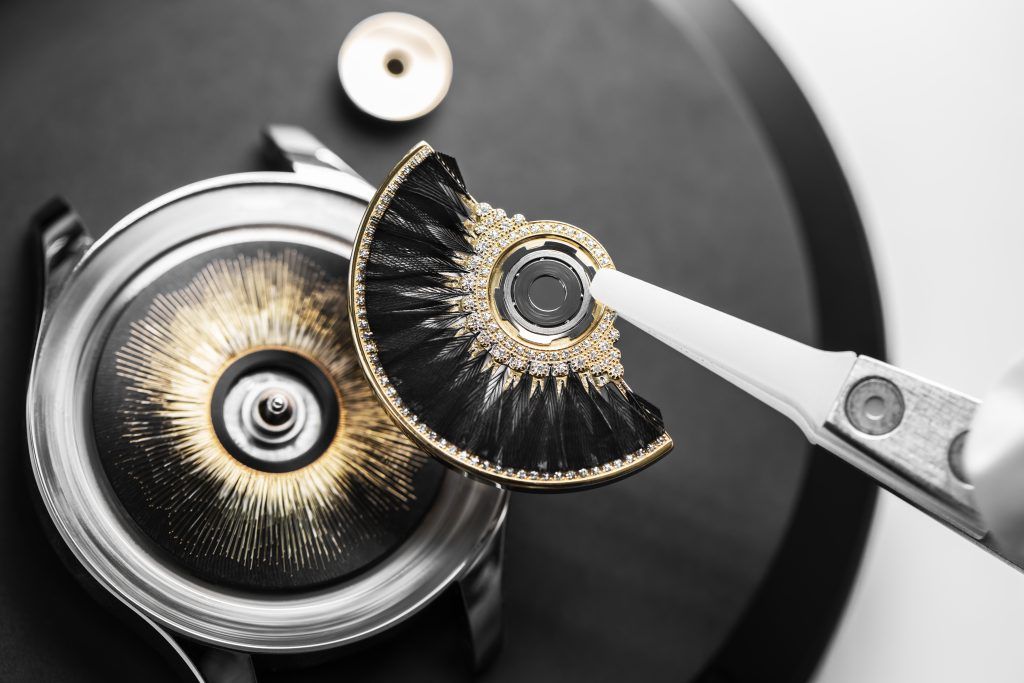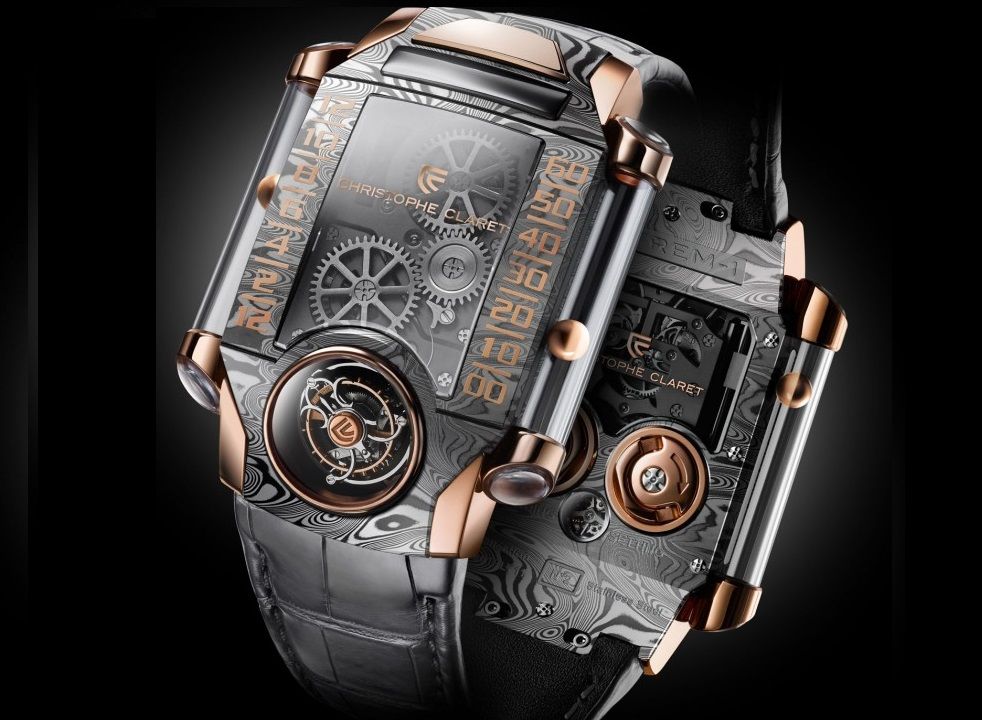We break down the traditional craftsmanship techniques that underscore haute horology
What exactly is métiers d’art? Time-worn techniques used by watchmakers to create decorative watches that put aesthetics before functionality.
From embroidery and ancestral Japanese art to maps engraved in miniature, métiers d’art takes luxury watchmaking to a whole other level. Learn about five traditional techniques below:

1. Enamelling
An extremely time-consuming technique, enamelling involves applying multiple layers of melted soft glass onto a dial with a goose quill. The dial is heated repeatedly in between coatings until the desired colour and vibrancy is achieved.
Attention to detail is essential: Should the artisan make one wrong move–overheat the dial, for example–the enamel will crack or produce gas bubbles and… boom! The whole process has to be restarted from scratch. The most common forms of enamelling are: grand feu; grisaille; plique-à-jour; champlevé; and cloisonné.




